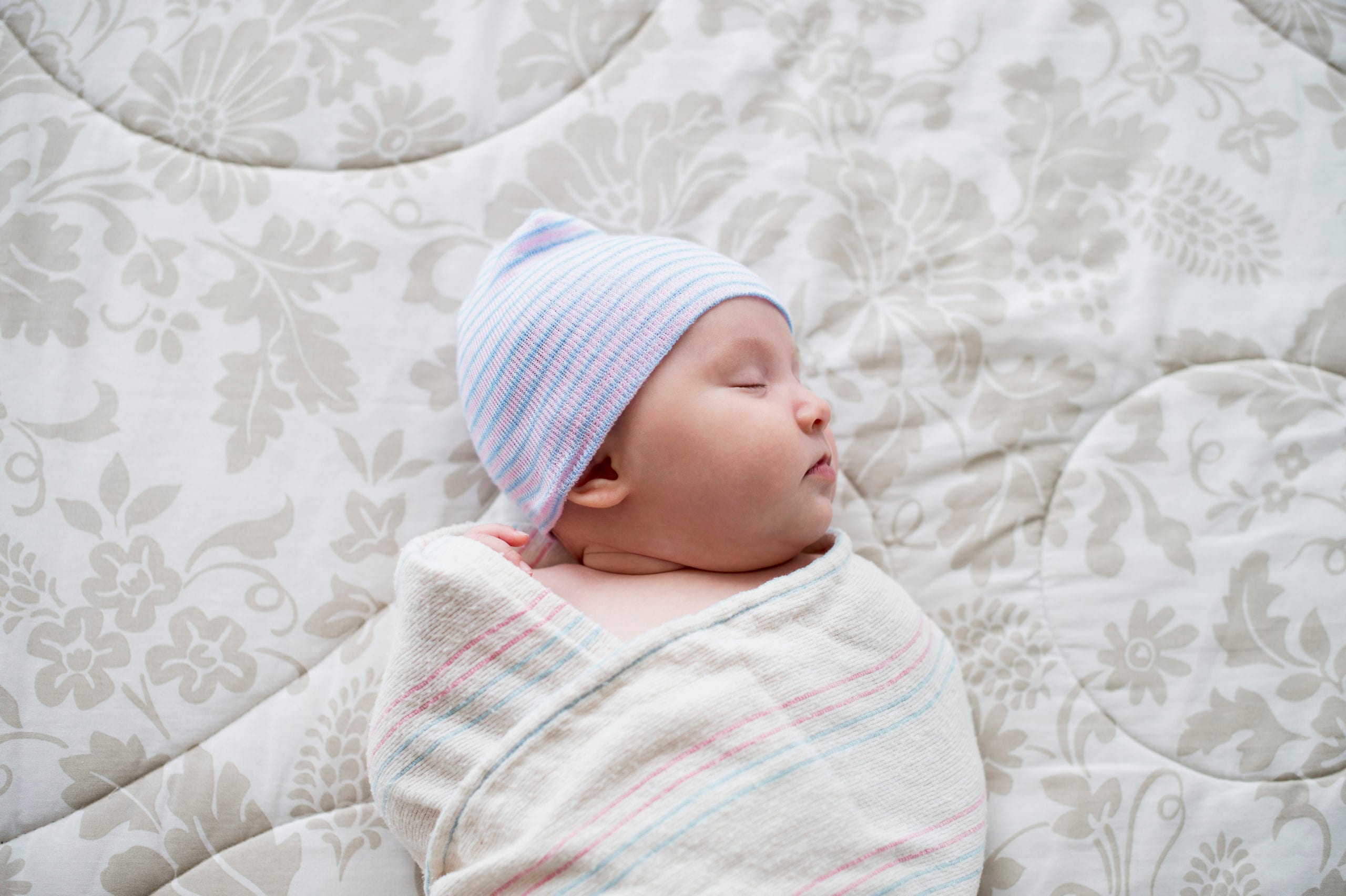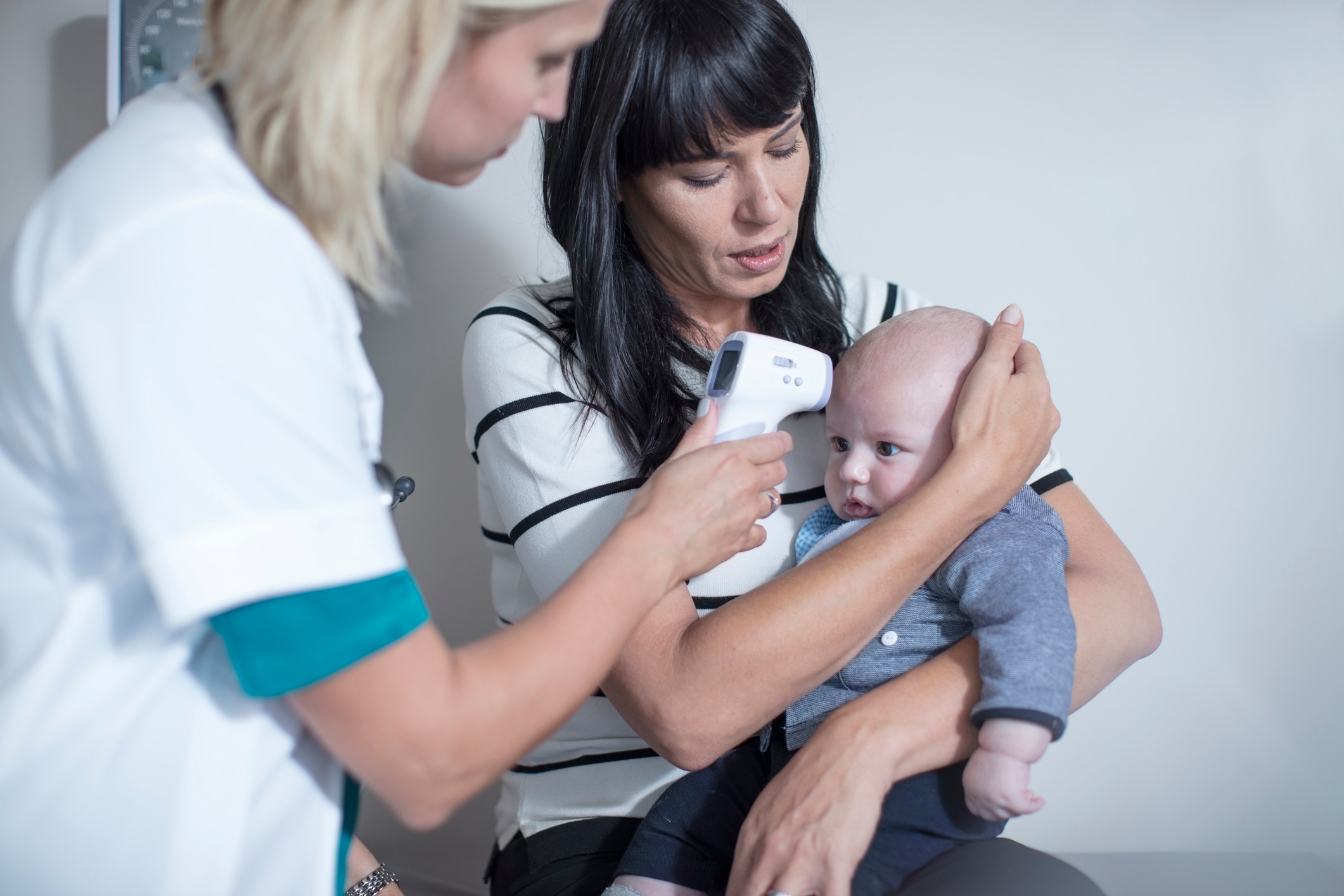The dangers of smoking cigarettes near babies and children (or anyone, for that matter) has been long documented, but what about vaping around babies and kids? Is it less harmful? More?
Vaping is relatively new, so a number of safety specifics still remain, but experts across the board are adamant about one thing: Vaping around kids is not safe.
“Using e-cigarettes [vaping] is not safe around children and babies,” says Dr. Maria Rahmandar, medical director of the Substance Use & Prevention Program at Lurie Children’s Hospital of Chicago. “Though e-cigarettes have only been around for a couple years and we are still learning about their health effects, we know they contain nicotine and other harmful ingredients. Not only can children accidentally ingest e-cigarette liquid, but the aerosol exhaled into the environment can be inhaled by children in the area — and it can settle on to dust and surfaces.”
“Not only can children accidentally ingest e-cigarette liquid, but the aerosol exhaled into the environment can be inhaled by children in the area — and it can settle on to dust and surfaces.”
— DR. MARIA RAHMANDAR, MEDICAL DIRECTOR
Whether you have questions about secondhand vaping or other safety concerns, here’s everything you should know about vaping around babies and kids.
What is vaping?
When someone “smokes” from an e-cigarette (or a “vape” or “vape pen”), it’s called vaping. E-cigarettes predominantly contain nicotine (which is what we’re talking about in this article) or cannabis, along with flavoring and other substances.
In many ways, electronic smoking devices (ESDs), which are either refillable or prefilled with liquid (“vape juice”), mimic smoking a traditional cigarette. However, instead of inhaling burning tobacco directly, with vaping, a person is inhaling the heated liquid that has been turned into vapor.
That being said, don’t be bamboozled by the word “vapor.” The Centers for Disease Control (CDC) notes that the aerosol that users breathe and exhale from e-cigarettes “can contain harmful and potentially harmful substances.” These include:
- Nicotine.
- Ultrafine particles that can be inhaled deep into the lungs.
- Flavorings such as diacetyl, a chemical linked to a serious lung disease.
- Volatile organic compounds.
- Cancer-causing chemicals.
- Heavy metals.
Is vaping around babies and children safe?
“The simple answer is ‘no,’” says Dr. Scott Frank, associate professor, Department of Population and Quantitative Health Sciences at Case Western Reserve University. “Secondhand aerosols — which are incorrectly called ‘vapor’ by the industry — from ESDs do not just emit ‘harmless water vapor.’ ESDs contain nicotine, ultrafine particles, heavy metals and low levels of toxins that are known to cause cancer.”
While there is “no question that the likelihood of harm is present,” Frank says, the degree of harm is “uncertain,” given the short amount of time vaping has been around.
“The full extent of harm from tobacco smoking took decades to discover and thirdhand smoking even longer,” he says. “Millions of people were harmed because we did not have certainty about the harmfulness of smoking to nonsmokers, especially to children. We would be ill-advised to repeat this mistake with secondhand aerosols.”
“The full extent of harm from tobacco smoking took decades to discover and thirdhand smoking even longer.”
— DR. SCOTT FRANK, PUBLIC HEALTH AND FAMILY MEDICINE EDUCATOR, RESEARCHER AND PRACTITIONER
Does vaping cause secondhand smoke?
“E-cigarettes produce a chemical-filled aerosol,” explains Rahmandar. “Part of this aerosol is exhaled into the environment, which can be inhaled by those around — secondhand aerosol. This aerosol can also settle onto dust and surfaces in the area, which can lead to thirdhand exposure.”
Is vaping around a baby or child safer than smoking cigarettes?
Dr. Christina Johns, a pediatric emergency physician and senior medical advisor at PM Pediatric Care, notes that “there is no definitive data on this topic as no researcher would conduct a study that would willingly put children in harm’s way.” However, she adds, “secondhand exposure of any sort to nicotine can be harmful to a child’s health.”
Put another way: Neither is a good idea. “While traditional cigarettes have tars and oxidant gasses that e-cigarettes do not, most have other harmful chemicals, so both can be harmful,” says Johns.
Frank puts it more bluntly. “Vaping is harmful to babies and children, so it is really irrelevant which is more harmful — smoking or vaping,” he says. “Would we ask whether we should feed our children one or two spoonfuls of poison?”
“Vaping is harmful to babies and children, so it is really irrelevant which is more harmful — smoking or vaping. Would we ask whether we should feed our children one or two spoonfuls of poison?”
— DR. SCOTT FRANK, PUBLIC HEALTH AND FAMILY MEDICINE EDUCATOR, RESEARCHER AND PRACTITIONER
Is secondhand vape smoke bad for babies and kids?
Frank adds that while “tobacco smoke is more harmful than vaping aerosols,” there are characteristics of the aerosols that “throw up major red flags” — especially if kids are around.
“While smoke from tobacco smoke goes up once released, the vapor from e-cigarettes is heavier than the air and sinks to the ground,” he explains. “Because of this, secondhand aerosols are more likely to be present on surfaces, such as the floor and furniture. This is not good for children and pets who are lower to the ground and crawl, roll and play on the surfaces where the vapor is settling.”
Is it bad to vape inside your house or car?
“Vaping in any enclosed space is a bad idea with children,” Frank says. “This is especially true for babies. Just think of how thin and sensitive a baby’s skin is, and therefore how much more likely they are to absorb the aerosol constituents, or be irritated by them.”
And keep in mind, this stands whether kids are present or not. Says Rahamandar: “Avoid using e-cigarettes in the house, car and other areas with children, even when they aren’t there since the aerosol and chemicals can linger in those areas.”
Can you vape and hold a baby?
According to Johns, hands should always be washed after vaping and prior to coming into contact with kids. “Residue can remain on the hands, which can react with the environment to cause pollutants, and nicotine remains as well,” she says. “These all can be harmful to children.”
“Residue can remain on the hands, which can react with the environment to cause pollutants, and nicotine remains as well. These all can be harmful to children.”
— DR. CHRISTINA JOHNS, PEDIATRIC EMERGENCY PHYSICIAN AND SENIOR MEDICAL ADVISOR at PM Pediatric care
If you’re going to vape, Rahmandar notes, you can reduce a baby’s exposure by “using e-cigarettes outside while wearing a coat, then removing the coat prior to coming inside and washing hands immediately.”
Vaping around babies and kids: other safety concerns
In addition to secondhand and thirdhand vape smoke, there are a number of concerns about parents and caregivers vaping around children. They include:
Nicotine poisoning. “One danger of vaping with children is the risk of nicotine poisoning as a result of improper disposal of used nicotine cartridges,” Frank says. “Liquid nicotine can kill or result in long-term damage to children. This damage can happen if the liquid is ingested, but even if it is merely spilled on a young child’s skin. Poison control centers receive thousands of calls each year about young children who have been exposed to vaping-related products. Because it’s a small quantity, people may not realize what a deadly toxin they have in their house when they have liquid nicotine.”
Sensitivities. “Many people have smell sensitivities, allergies and/or adverse effects from the aerosol,” Frank says. “Common side effects are headaches and nausea, but [the aerosol] can also cause respiratory distress and disease. Since we can’t predict who may have these sensitivities, caution should be exercised.”
“Secondhand messages.” “When a parent vapes in front of or around their child, they’re essentially saying that it is OK to vape, despite likely knowing that nicotine is powerfully addictive, especially if started in adolescence,” says Frank. “There is no question that the children of smokers are more likely to grow up to become smokers or vapers themselves. Parents generously share nearly everything in their lives with their children. But sharing addiction is something to be avoided at all cost.”
How to have the “vape talk” with nannies, sitters or other caregivers
According to Michelle LaRowe Conover, lead educator at Global Nanny Training, the legal questions you can ask a potential employee may vary from state to state. “But,” she adds, “parents should set their workplace expectations, including that their home is a first, second, and thirdhand smoke-free environment when interviewing potential child care providers and further address that expectation in their written work agreement.”
“To ensure there is no confusion over the parents’ desire to raise their child in an environment free from smoke-related hazards, communication surrounding workplace expectations should be direct and clear, as well as require acknowledgement from the provider that the expectations were reviewed and accepted.”
Where to find help
“Quitting nicotine can be very difficult,” Rahamandar acknowledges. However, if you’re looking to kick the habit, she recommends contacting your medical provider to discuss quitting and get support.
“Additionally, folks can call 1-800-QUIT-NOW to contact their state tobacco quitline, which can put them in touch with coaches and help them get medications,” Rahmandar says, adding that “the CDC can be a resource, as well.”





